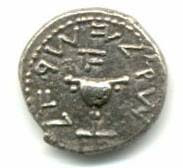January 16, 1975 marked the end of the MIG-25 Foxbat dominating the skies with world records for Time to Climb to various altitudes.
These records were smashed by this aircraft:
The Mighty F-15 Eagle.
With a thrust to weight ratio of greater than one, it had power to spare. Strip it down of all non-essential equipment and the Streak Eagle was ready to set some new records.
On the first day, January 16, 1975 five of the eight records held by the MIG-25 and by the F-4 Phantom were broken:
More than 60 flights were flown leading up to and including the record attempt. Record flights were flown, in ascending order at meter intervals of 3,000/6,000/9,000/12,000/15,000/20,000/25,000 and 30,000.January 16, 1975, was historic, as records for the first five altitudes fell in the space of six hours, with the three in the middle all occurring on the same flight. On the first record flight, the "Streak Eagle" was flown to the 3,000 meter height in 27.57 seconds, eclipsing the old mark by a margin of 6.9 seconds.
The 6,000 meter record of 39.33 seconds (by a margin of 9.5 seconds); 9,000 meters in 48.86 seconds (by a margin of 12.8 seconds); and 12,000 meters in 59.38 seconds (by a margin of 17.7 seconds), were all set on the same flight. Maj. MacFarlane flew this record flight. "He lifted off in the blink of an eye, level accelerated just a few feet off the ground, pulled up into a vertical climb and accelerated through the speed of sound easily while in the vertical climb," Enos said. "The airplane and engines operated perfectly."
For the record attempts at 15,000 meters and above, pilots wore high-altitude pressure suits. At these higher altitudes, the Streak Eagle was 10 seconds faster to altitude than the Apollo Saturn Rocket moon shots. The 15,000 meter record of 77.02 seconds (by a margin of 37.5 seconds) was flown on a profile similar to the lower record flights. The last three record flights had similar profiles – a level acceleration at just above ground level, followed by a constant G pull up to a vertical climb, and then an "Immelmann turn," an aerobatic maneuver that results in level flight in the opposite direction at a higher altitude, followed by an acceleration to the target Mach number, then a constant G pull up to the optimum climb angle. Incredibly, on the 30,000 meter record attempt, at the time of the Immelmann, the aircraft was about 21 miles down-range and through Mach 2 speed - only two minutes after take-off. On that flight, a promotional U.S. Air Force video reported that the "Streak Eagle" was on a "nearly ballistic flight path."
Three Air Force pilots Maj. William "Mac" MacFarlane, Maj. Roger Smith, and Maj. Dave Peterson flew the Eagle, busting the records previously held by the F4 Phantom and MIG-25. This is what happens when you combine hot pilots with a hot aircraft. The Streak Eagle flew faster than the Saturn 5 moon mission rockets.
There is video taken at the time of these record breaking attempts, complete with 70's music:
Now That's an aircraft.
The Streak Eagle now nests at the National Museum of The US Air Force in Dayton Ohio.


3 comments:
Hey Aaron;
Thanks for the article, Man I forgot about this one. I remembered seeing the plane in the museum in Ohio and didn't really catch the significance, time for a "do over". I remembered when the Mig 25 flew the records, they hammered their engines into scrap doing that.
Great remembrance, Aaron!
Yeah, those big ol' Tumansky engines in the Foxbat didn't have much endurance.
The F-15? Fill the tanks, and let's do it again!
Meh, had to strip it down, rather that doing it with a fully loaded airplane. And it took almost 30 years to break the F-4's records, so that says something for the staying power of the Phantom.
Post a Comment